Magnet Fishing 101: Learn How to Go Magnet Fishing
Learn How to Go Magnet Fishing: A Step-by-Step Guide
Magnet fishing is a fun and exciting outdoor activity that combines fishing and treasure hunting. Using a strong magnet, you can explore lakes, rivers, and other bodies of water to find metal objects. Here’s how to get started!
What You’ll Need
- Essential Equipment
1. Neodymium Magnet: A strong magnet with a pulling force of at least 500 lbs is ideal. Look for a double-sided magnet for increased retrieval chances.
2. Rope: A durable, waterproof rope (at least 50 feet long) with a minimum breaking strength of 1000 lbs.
3. Gloves: To protect your hands from sharp objects and to improve grip.
4. Bucket or Bag: For collecting and storing your finds.
5. Safety Gear: Depending on your location, this may include waders, a life jacket, or sunscreen.
-Optional Equipment
- Trowel or Spade: Useful for digging in muddy or sandy areas.
- Metal Detector: Can help locate buried metallic items before magnet fishing.
- Camera or Smartphone: To document your finds.
Step-by-Step Guide
Step 1: Choose a Location
1. Research Potential Spots: Look for rivers, lakes, or canals with historical significance, as they’re more likely to have interesting finds. Parks, old bridges, and docks can also be great locations.
2. Check Local Regulations: Ensure magnet fishing is allowed in your chosen spot. Some areas may have restrictions on collecting items from water bodies.
Step 2: Prepare Your Equipment
1. Attach the Magnet to the Rope: Use a secure knot (like a bowline) to attach your magnet to one end of the rope. Double-check the knot for security.
2. Wear Safety Gear: Put on gloves and any other safety equipment necessary for your location.
Step 3: Start Fishing
1. Toss the Magnet: Find a clear spot to cast your magnet. Aim for areas with potential underwater structures or debris, like piers or submerged rocks.
2. Reel it In: After a few minutes, slowly pull the rope back, feeling for any resistance. If you feel something snagged, carefully lift it out of the water.
3. Inspect Your Find: Safely retrieve your treasure and inspect it for any interesting artifacts or valuable items.
Step 4: Clean and Store Your Finds
1. Clean Your Items: Rinse off any mud or debris. Use a wire brush for rust or stubborn dirt.
2. Store Safely: Place your items in your bucket or bag. If you find anything sharp, ensure it’s wrapped or stored securely.
Step 5: Respect the Environment
1. Follow the “Leave No Trace” Principle: Don’t leave behind trash or debris. Pack out what you pack in.
2. Be Mindful of Wildlife: Avoid disturbing any habitats and be cautious of waterfowl or other animals.
Step 6: Share Your Experience
1. Document Your Finds: Take photos and notes about your adventure. This can help you track your discoveries over time.
2. Join a Community: Consider joining local magnet fishing groups or online forums to share your experiences, tips, and treasures with others.
Safety Tips
- Watch for Hazards: Be mindful of the water depth, current, and potential submerged objects.
- Stay Aware of Your Surroundings: Be cautious of people and wildlife in the area.
- Don’t Overexert Yourself: Take breaks as needed and stay hydrated.
Conclusion
Magnet fishing is not only a thrilling hobby but also a way to connect with nature and history. With the right gear, preparation, and respect for the environment, you can enjoy countless adventures while uncovering hidden treasures. Happy fishing!
Magnet fishing is a fun and exciting outdoor activity that combines fishing and treasure hunting. Using a strong magnet, you can explore lakes, rivers, and other bodies of water to find metal objects. Here’s how to get started!
What You’ll Need
- Essential Equipment
1. Neodymium Magnet: A strong magnet with a pulling force of at least 500 lbs is ideal. Look for a double-sided magnet for increased retrieval chances.
2. Rope: A durable, waterproof rope (at least 50 feet long) with a minimum breaking strength of 1000 lbs.
3. Gloves: To protect your hands from sharp objects and to improve grip.
4. Bucket or Bag: For collecting and storing your finds.
5. Safety Gear: Depending on your location, this may include waders, a life jacket, or sunscreen.
-Optional Equipment
- Trowel or Spade: Useful for digging in muddy or sandy areas.
- Metal Detector: Can help locate buried metallic items before magnet fishing.
- Camera or Smartphone: To document your finds.
Step-by-Step Guide
Step 1: Choose a Location
1. Research Potential Spots: Look for rivers, lakes, or canals with historical significance, as they’re more likely to have interesting finds. Parks, old bridges, and docks can also be great locations.
2. Check Local Regulations: Ensure magnet fishing is allowed in your chosen spot. Some areas may have restrictions on collecting items from water bodies.
Step 2: Prepare Your Equipment
1. Attach the Magnet to the Rope: Use a secure knot (like a bowline) to attach your magnet to one end of the rope. Double-check the knot for security.
2. Wear Safety Gear: Put on gloves and any other safety equipment necessary for your location.
Step 3: Start Fishing
1. Toss the Magnet: Find a clear spot to cast your magnet. Aim for areas with potential underwater structures or debris, like piers or submerged rocks.
2. Reel it In: After a few minutes, slowly pull the rope back, feeling for any resistance. If you feel something snagged, carefully lift it out of the water.
3. Inspect Your Find: Safely retrieve your treasure and inspect it for any interesting artifacts or valuable items.
Step 4: Clean and Store Your Finds
1. Clean Your Items: Rinse off any mud or debris. Use a wire brush for rust or stubborn dirt.
2. Store Safely: Place your items in your bucket or bag. If you find anything sharp, ensure it’s wrapped or stored securely.
Step 5: Respect the Environment
1. Follow the “Leave No Trace” Principle: Don’t leave behind trash or debris. Pack out what you pack in.
2. Be Mindful of Wildlife: Avoid disturbing any habitats and be cautious of waterfowl or other animals.
Step 6: Share Your Experience
1. Document Your Finds: Take photos and notes about your adventure. This can help you track your discoveries over time.
2. Join a Community: Consider joining local magnet fishing groups or online forums to share your experiences, tips, and treasures with others.
Safety Tips
- Watch for Hazards: Be mindful of the water depth, current, and potential submerged objects.
- Stay Aware of Your Surroundings: Be cautious of people and wildlife in the area.
- Don’t Overexert Yourself: Take breaks as needed and stay hydrated.
Conclusion
Magnet fishing is not only a thrilling hobby but also a way to connect with nature and history. With the right gear, preparation, and respect for the environment, you can enjoy countless adventures while uncovering hidden treasures. Happy fishing!
2000Lbs Double Sided Magnet Fishing Kit, Fishing Magnet with 100ft Rope with Carabiner
Ultra-Powerful Magnets for Retrieving Items in River, Lake, Beach, Lawn, Unique Red Color
- WHAT YOU NEED: The Hercules Magnetics fishing Double-Sided Magnet Fishing Kit is definitely a must for anyone who enjoys magnet fishing as a hobby or has to deal with finding, fixing or retrieving lost underwater objects.
- THE COMPLETE KIT: This Fishing Magnet Kit includes everything you need for a complete magnet fishing experience. You’ll receive an ultra-powerful Double Sided 2000lbs triple layer Ni-Cu-Ni magnet and a 30-meter rope, all set for your needs!
- ULTRA-POWERFUL & STURDY: These Double Sided fishing magnets with rope feature an ultra-strong 2000lbs pulling force, being ideal for lifting heavy underwater objects. Find and collect any ferrous metal in deep or shallow waters!
- UNIQUE RED COLOR WITH LASER ETCHED LOGO: The Hercules Magnetics magnet fishing kit is made from superior quality, highly durable materials, guaranteed to withstand the test of time without water damage, corrosion or rusting. The gorgeous RED color makes it easy to spot while adding a unique touch to your kit! We also used a unique laser etching process so you can know that this is a Hercules Magnetic!
- ENHANCED VERSATILITY: Whether you’re an enthusiastic antiques and lost treasures hunter, for industrial jobs such as fixing water pumps or tools, this fishing magnet with rope will provide wide applications!



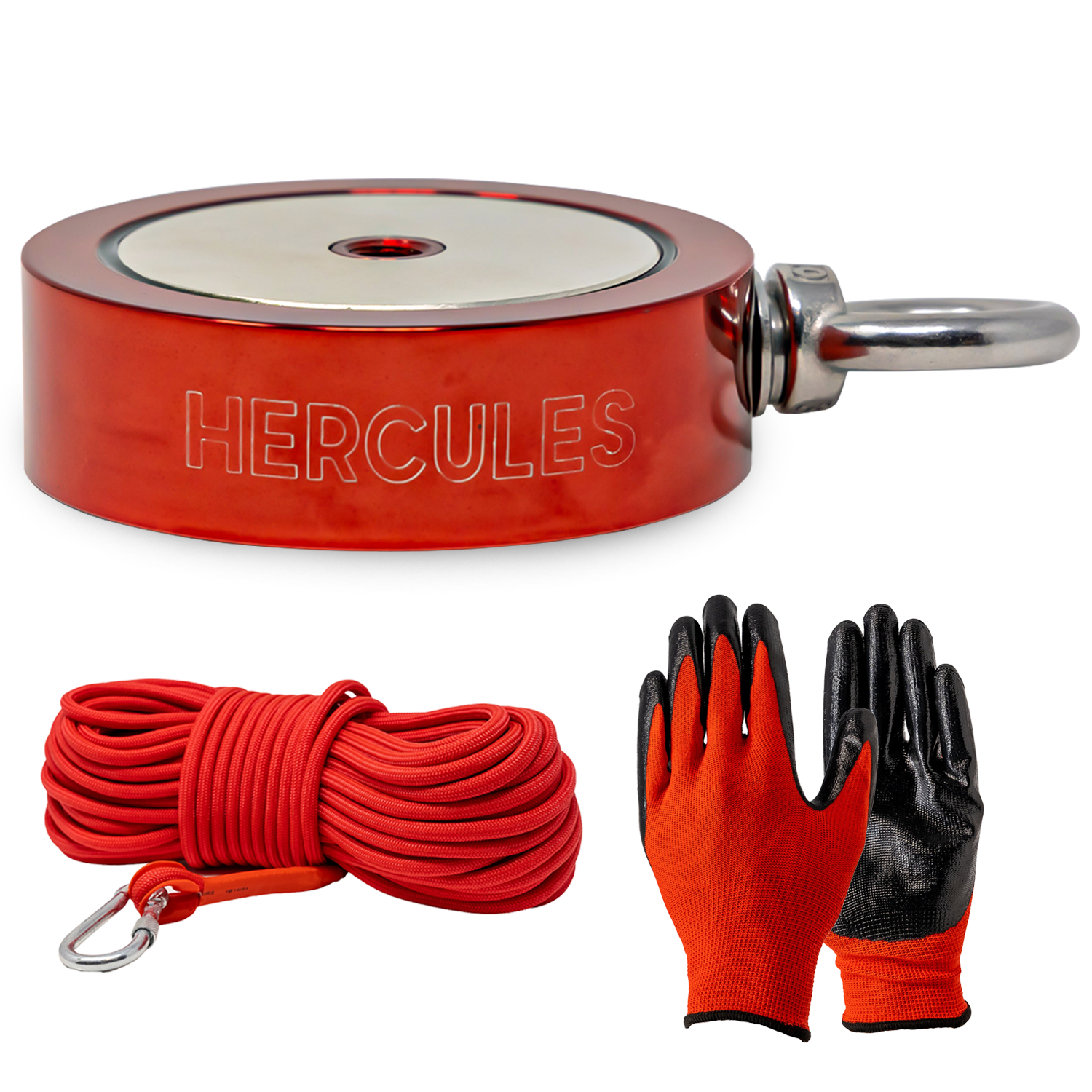
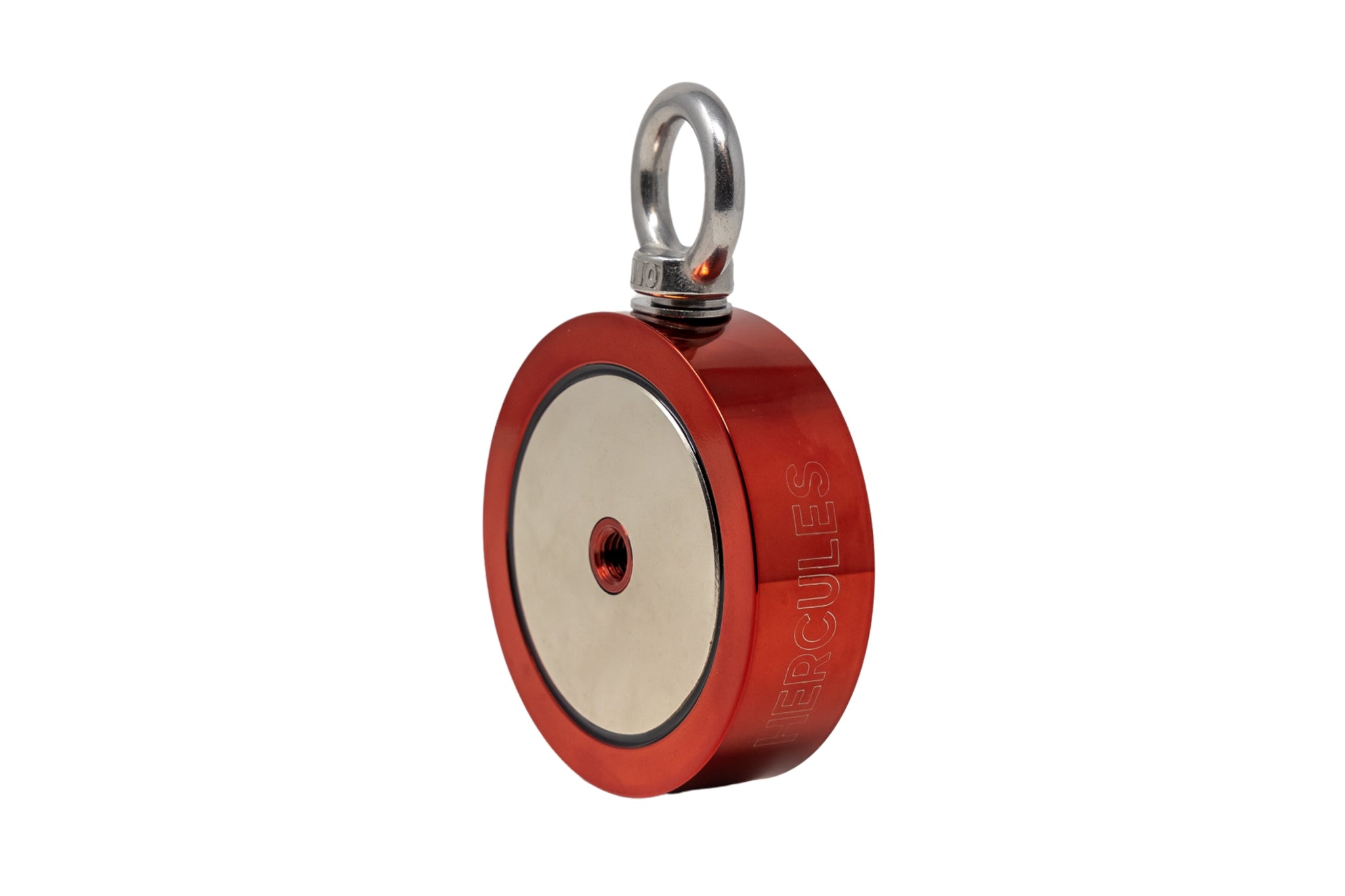
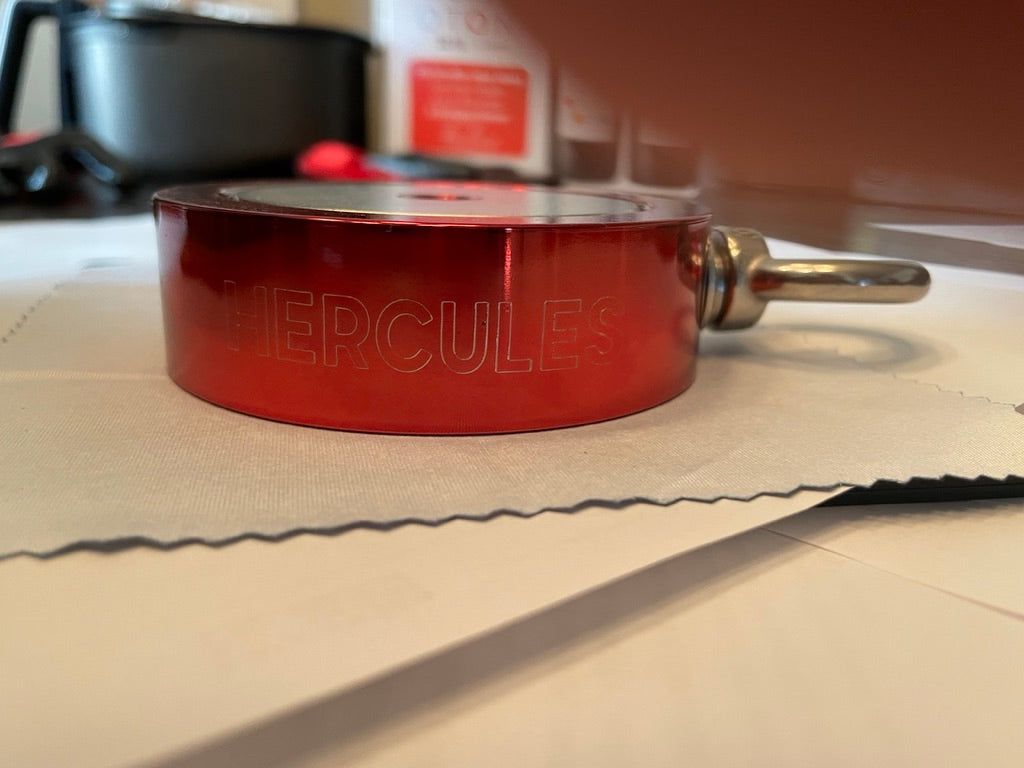
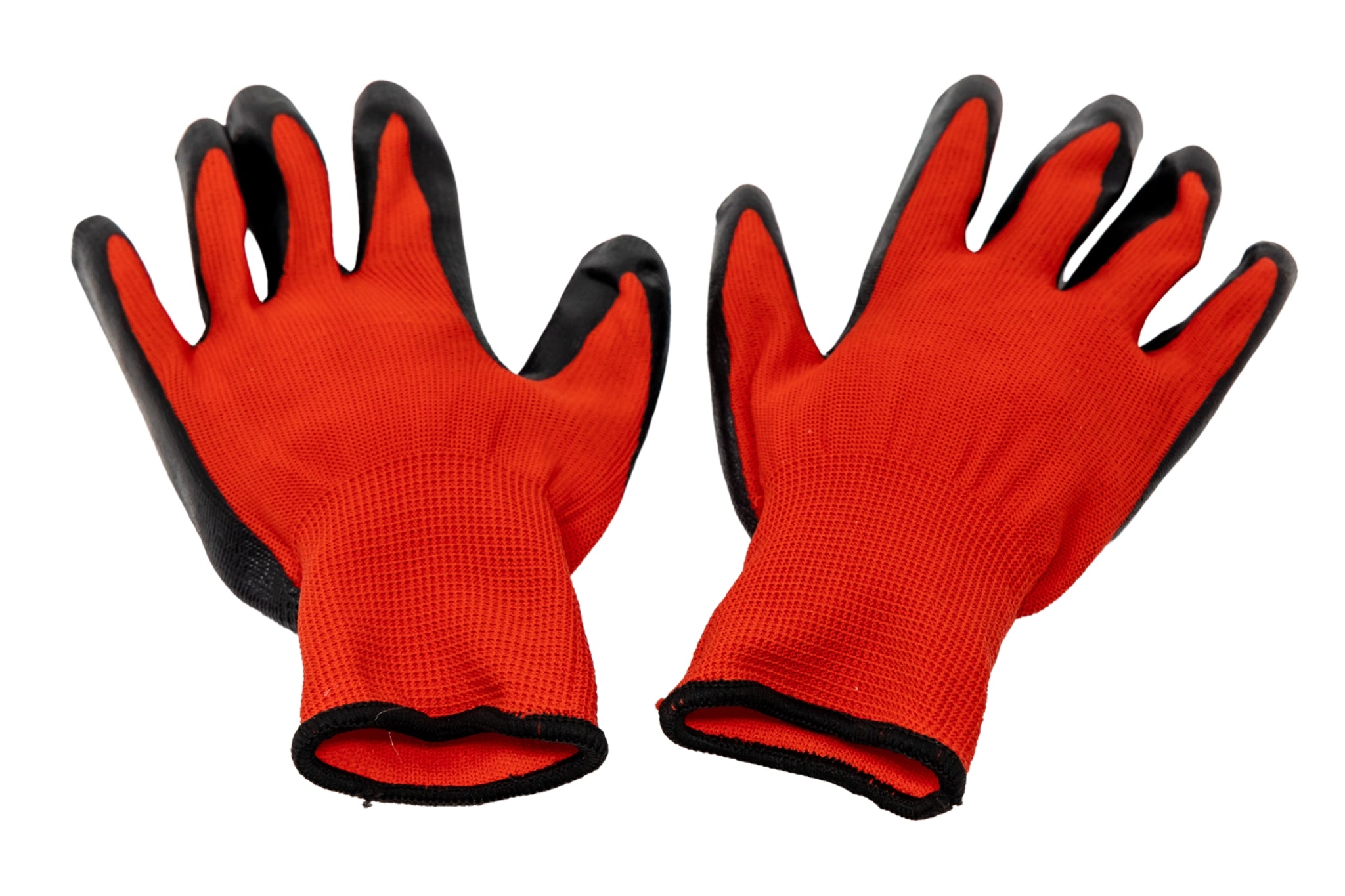
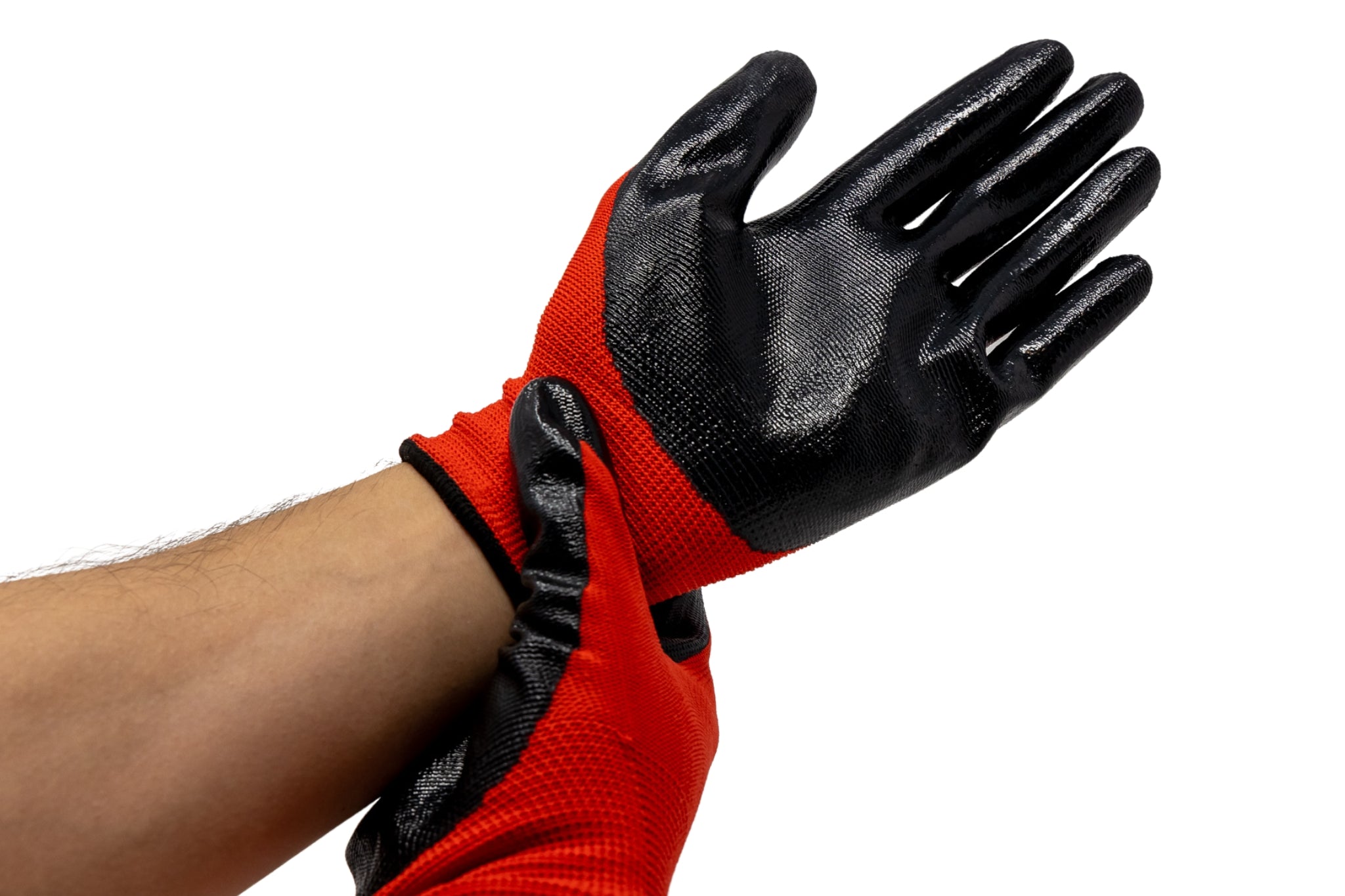
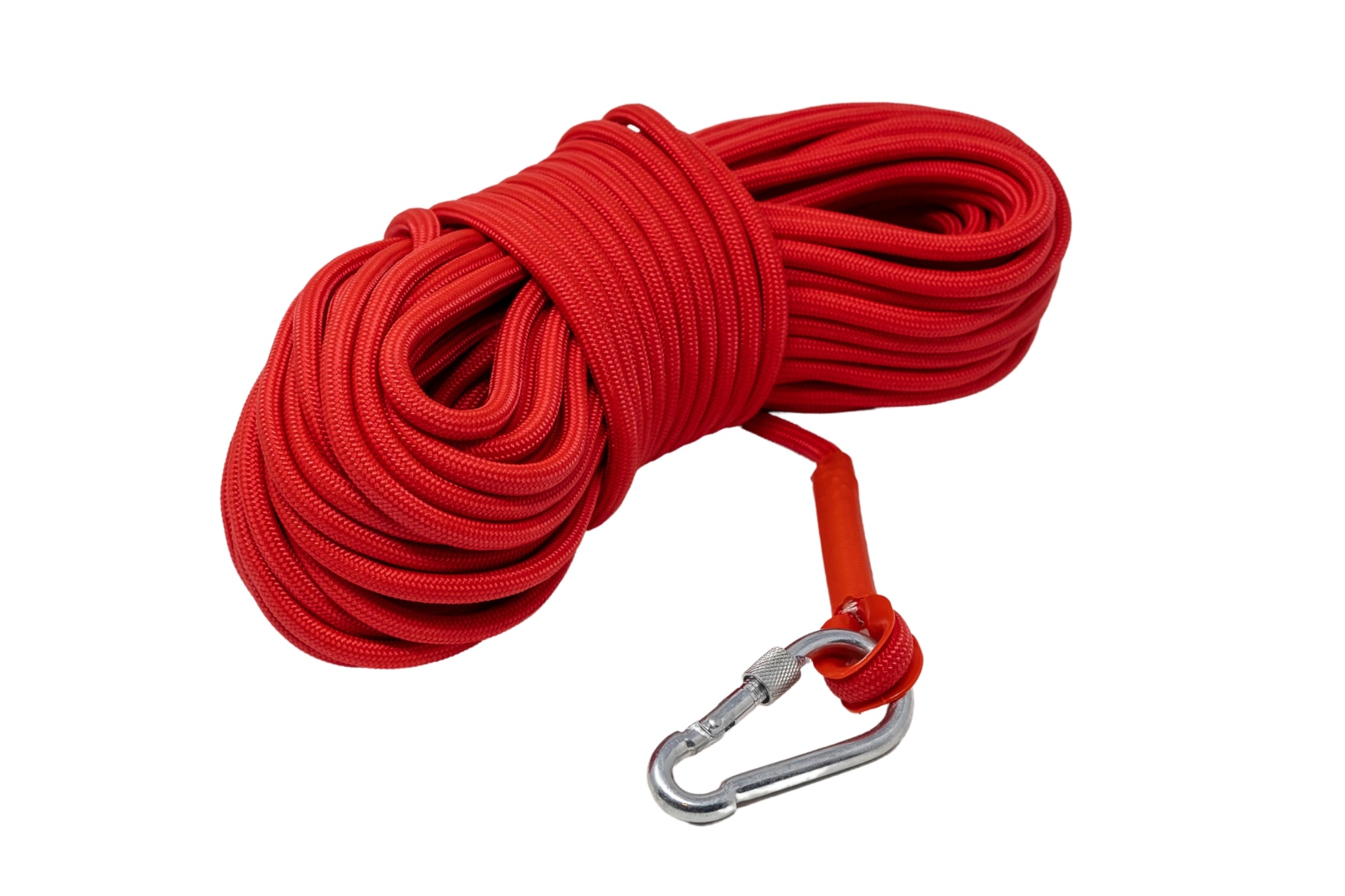



Share and get 15% off!
Simply share this product on one of the following social networks and you will unlock 15% off!